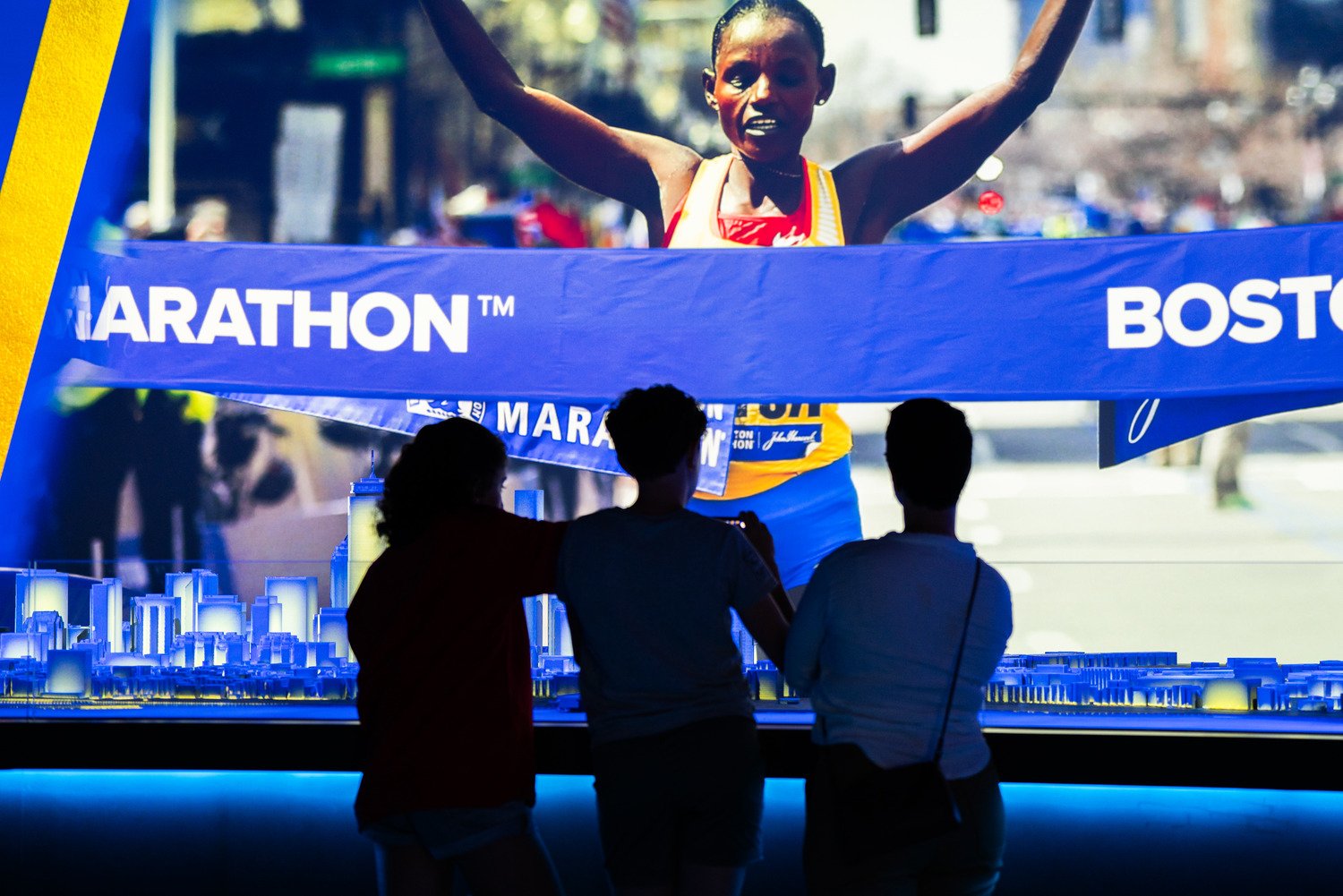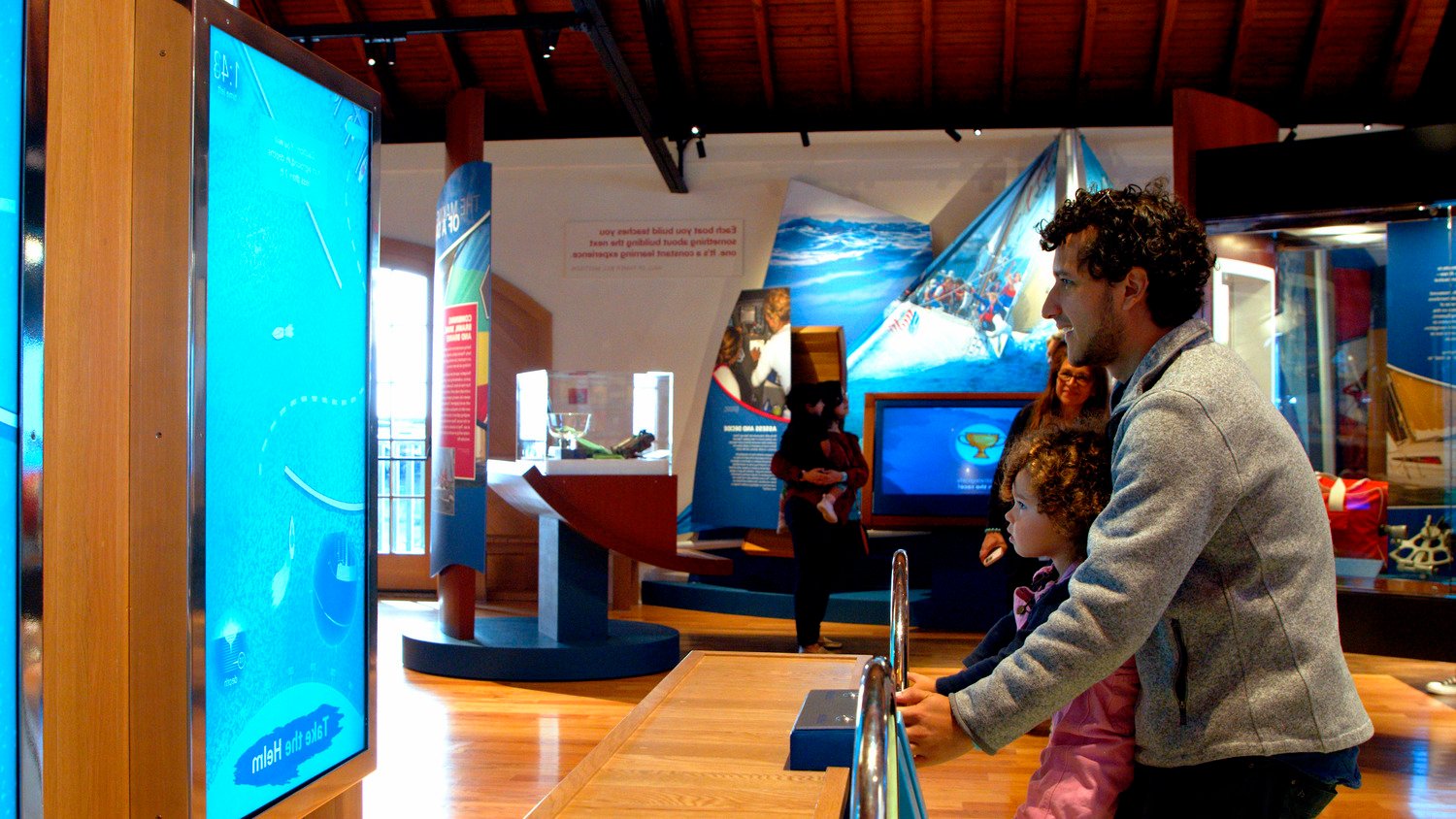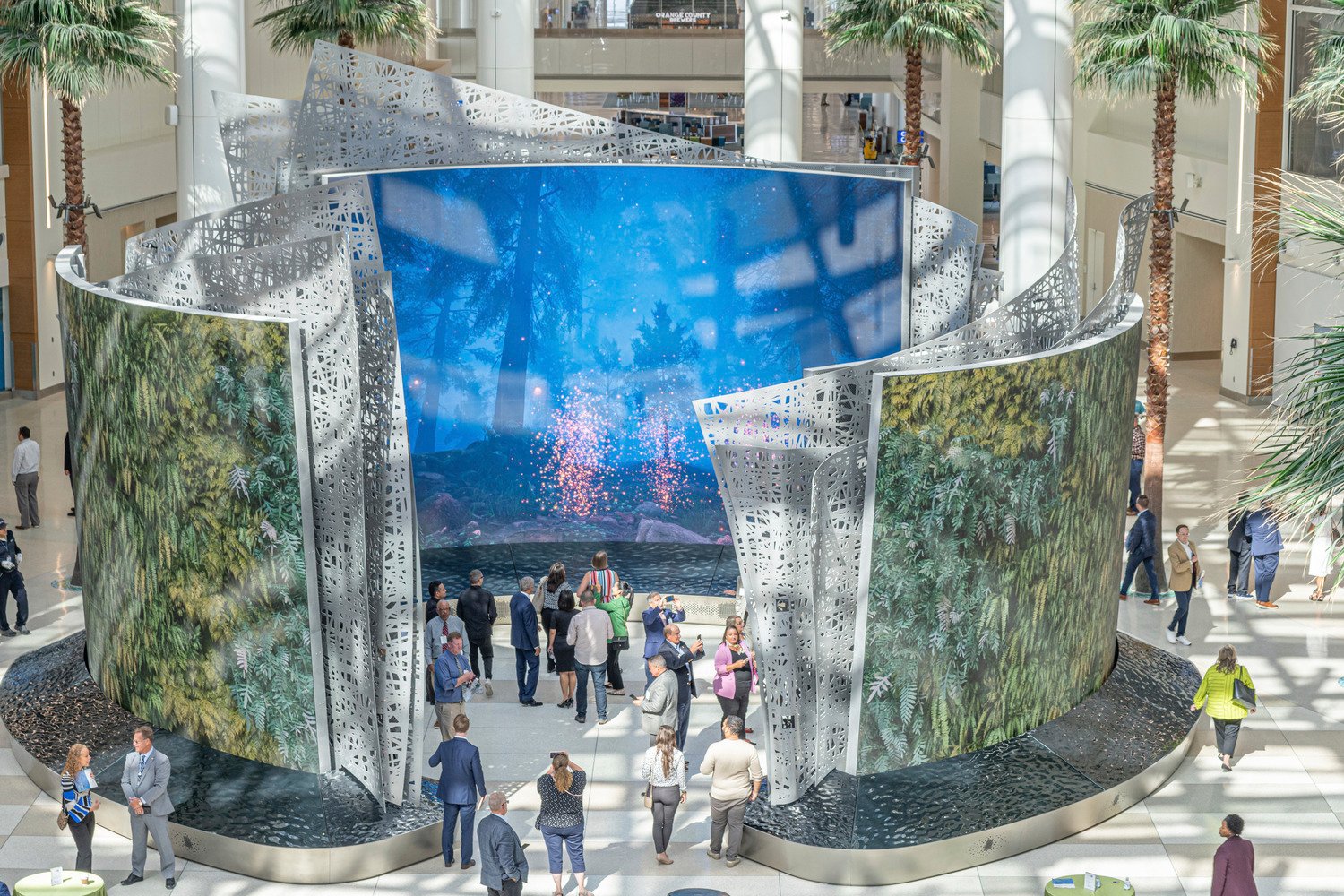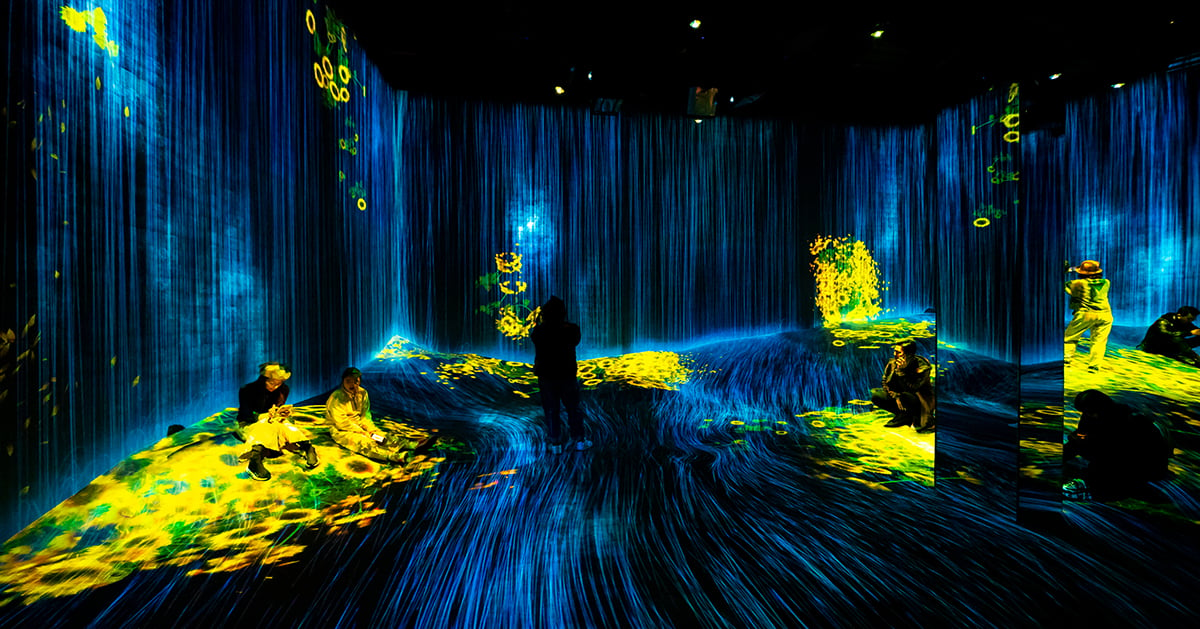
Experiential technology: The top five examples from 2023
2023 has seen some exciting developments in the way experiential technology is reshaping the guest experience. Electrosonic collaborates with partners to demonstrate the benefits of investing in new technologies. These technologies aim to attract and engage a larger number of visitors and customers.
Ryan Poe, Electrosonic's Director of Technology Solutions, discusses the progress in experiential technologies. He also highlights five projects that show their effectiveness and inclusivity.
Experiential technology elevates the guest experience
There have been some dramatic developments in emerging experiential technologies during 2023. We used these technologies to create memorable experiences in many different projects around the world.
We picked these five experiential technology examples because they show how important technology is for the guest experience. Before we proceed, let's consider the scope and benefits of this technology.
An experiential technology system uses technology and information to provide guests with a fully immersive experience. Typically, a system will include software, hardware, data, content and control systems. The solution can immerse guests in a place, service, product or brand.
Experiential technology can bring a space to life, strengthen its brand or identity and improve the experience for guests. That’s important because today's guests are more knowledgeable about technology as highlighted by Forbes.

We also wanted to learn how organizations were responding to these drivers. So, we conducted the first-ever research into one industry that's pushing the envelope when it comes to experiential technology, airports. We explored executives' attitudes and intentions towards passenger experience and technology. Here’s what the independent researchers found:
- 68 percent of development executives see experiential technology as key to improving guest satisfaction.
- 94 percent of responding executives are planning or implementing experiential technology options.
- 84 percent of responding executives are considering investment in next-generation interactive signage.
The growth of the global customer experience management market also reflects the impact of these drivers. Fortune Business Insights projects that the market will grow from $11.34 billion in 2022 to $32.53 billion in 2029.
However, engaging customers in this changing ‘virtual world’ depends on the quality of immersive experiences as a Gartner study commented. The examples below explore the success of this approach in 2023.
2023 experiential technology projects and examples
Boston 365 at View Boston
View Boston is a 59,000-square-foot observation deck experience that combines breathtaking views with immersive, interactive experiential technologies.
At ‘Boston 365’ guests encounter a 50-foot-wide 3D scale model of the city. Projection mapping and audio bring the model to life, displaying 12 looped stories that celebrate Boston's highlights.





‘Explore Boston’ offers all visitors a chance to learn more about the city. Fourteen large touchscreens with speakers provide information about specific locations. Guests can use this information to plan their visit. Experiential technology has redefined city exploration. Thanks to its accessibility, View Boston enables a diverse audience to immerse themselves in the city's rich offerings.
The Sailing Museum
The Sailing Museum in Newport, Rhode Island uses experiential technology to create an interactive gaming environment. RFID technology enables a personalized experience. Visitors can use bracelets with QR codes to track their skills during an exciting journey of discovery.
Six exhibit spaces explore qualities that make a successful sailor. Visitors learn more about those qualities through 16 installations featuring interactivity, dome projection, video and haptic technology.

Okta New York Experience Center
Okta's New York Experience Center uses Lidar mapping, dynamic content and LED systems to provide an immersive experience. This engages visitors and showcases the company’s brand values. This project is a great example of brand activation.
We installed cameras and Lidar sensors in the building. As people pass by, the sensors make content and animations react to their movement. The cameras also display people's digital shadows on a long screen illuminated by a vast array of LED lights. The 1675-linear-foot screen consists of 8-foot LED’fins’.
The experience center design includes LED systems, people tracking, dynamic content, immersive audio and a sophisticated control system. These elements work together to create a seamless immersive guest experience.





The Moment Vault, Orlando International Airport
Orlando International Airport is one of the world’s busiest airports. The new Terminal C redefines passenger experience. It welcomes travelers with two compelling experiential technology installations - the ‘Moment Vault’ and ‘Windows on Orlando’
The Moment Vault engages travelers with advanced interactive experiences. It features 3D motion capture, tracking technology, and high-resolution digital content. Six LED screens in a circular shape create a 360-degree immersive space.

Inside the area, a system powered by artificial intelligence captures the movements of people. It then creates a 3D virtual image of each person. The system uses this information to instantly combine virtual characters with digital content.
Mars: The Next Giant Leap
‘Mars: The Next Giant Leap’ is the latest exhibition at the Carnegie Science Center, in Pittsburgh, Pennsylvania. Experiential technology takes visitors on a 300-million-mile space journey. Through interactivity visitors can participate in decisions that could make life on Mars a reality.
'Dream Big: Space' is a large interactive model of a future Martian colony. Visitors use touchscreens to vote on issues that could influence the development of the colony. Projection mapping on the model highlights changing content influenced by the votes.
The exhibition will continue to evolve to display new information about the planet. Therefore, the technology must be flexible to accommodate new content. A custom content management system enables staff to easily update the experience.





Emerging technologies from the best experiential technology companies
While AV is the foundation for great experiences, emerging experiential technologies can take them to even higher levels. That’s important because, as the ‘Index ‘comments, the latest technologies position brands as cool. This is how the some of those technologies are transforming guest experiences:
- LED technologies such as transparent OLED or ultra-fine pixel pitch LED improve viewing quality.
- Beamforming and spatial audio enhance the audio experience by creating immersive soundscapes.
- Haptic speakers enable special audio effects that add a degree of realism and excitement.
- LIDAR sensors enhance interactivity by tracking guests’ movement to trigger show control elements.
- Virtual reality and augmented reality supplement physical elements by delivering new types of immersive experience.
The choice of pixel pitch is also evolving. This helps us make the right decisions about resolution. So, for example, we might choose a low-resolution display with a diffusion layer to create an ambient colorscape. But we might have a large-scale space that requires high fidelity.
Sometimes, even ultra-high definition may not be clear enough for expansive areas that require top-notch quality. So, we carefully consider pixel pitch and pixel quality.
Collaboration delivers the best experiential technology examples
Technical decisions like those can be challenging so it’s important to collaborate with experts. That’s why creating experiential technology solutions involves wide-ranging collaboration. Typically, the team includes architects, designers, storytellers, producers, engineers, integrators, specialists, fabricators and support teams.
Through collaboration like that we can continue to bring more great projects to life.
Ryan Poe
Ryan Poe, Electrosonic’s Director of Technology Solutions, works and writes on the frontiers of advanced technology. He is a trusted adviser on leveraging technology in new ways and works within our Innovation Garage framework to evaluate new technologies and develop resources that support a portfolio of advanced services.










.jpg?width=1500&height=995&name=ELC501_N17_medium%20(1).jpg)

![[Use technology to build inclusive spaces]](https://no-cache.hubspot.com/cta/default/5104351/2957d6c5-f35e-477b-ab4b-8def7e9f5ddc.png)






.jpg)

.jpg)













.jpg)



.jpg)




-png.png)












.jpg)





.jpg)


-(1)_1200x629px.jpg)




.jpg)
.jpg)





-RR.jpg)







.png)




.jpg)






.png)





















%20(1)-es.jpg)
.jpg)








.jpg)

.jpg)





.jpg)



.jpg)















.png)

.png)





























.jpg)
.png)





.png)

.jpg)


.png)






.jpg)
.jpg)


